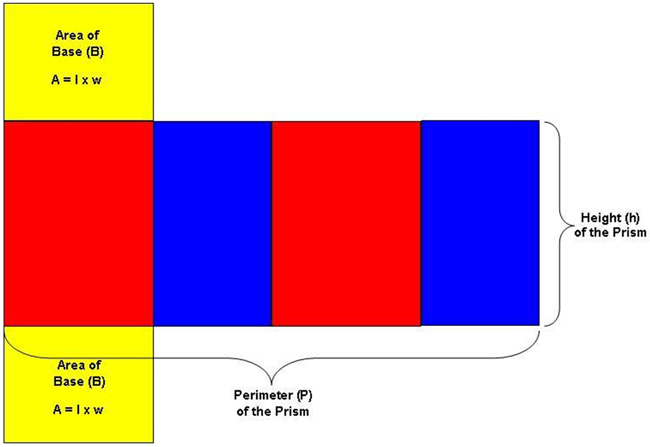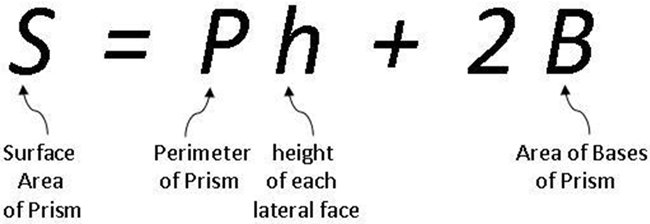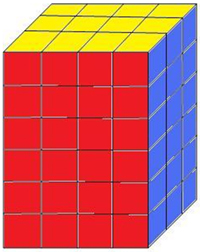
Another way to find the total surface area of the prism, is to think in bigger chunks. Here is a diagram to illustrate this.

The diagram shows the lateral faces of the prism forming one big rectangle. The area of the big rectangle is found by adding the widths of all of the individual faces, the perimeter (P) of the prism, and then multiplying by the height. Next, find the area of one of the two congruent bases, area B. To find the total surface area, add the area of the large rectangle plus two times the area of the base, B  S = Ph + 2B.
S = Ph + 2B.

Note: Lower case b and h represent the length of the base or the height of an individual polygon. Upper case B represents the area of a polygon base and upper case P refers to the perimeter of the prism.
 |
Find the Surface Area S = Ph + 2B:
|